Photographs: Parth Sanyal/Reuters Santosh Tiwari in New Delhi
There is one area in which West Bengal has come out on top: Utilisation of funds under the National Rural Drinking Water Programme, or NRDWP.
The state has spent about half the sum of its allocation (Rs 418.03 crore or Rs 4.18 billion) and opening balance (Rs 47.34 crore or Rs 473.4 million).
The allocation for the programme was raised from Rs 5,800 crore (Rs 58 billion) in 2009-10 (revised estimates) to Rs 8,550 crore (Rs 85.5 billion) in the current financial year.
. . .
Bengal uses half of rural water funds, rest even less
Image: A girl carries water in a slum area next to the Union Carbide Corp pesticide plant in Bhopal.Photographs: Reinhard Krause/Reuters
However, the total money spent by all the states this financial year till November was Rs 3,820.21 crore (Rs 38.2 billion), which is 34 per cent of the sum of the allocation for the full year and the opening balance (Rs 2,712.91 crore or Rs 27.12 billion).
NRDWP, a component of Bharat Nirman, is one of the flagship schemes of this United Progressive Alliance government, which swears by the common man.
It is designed to provide safe drinking water to every household in the rural areas, while ensuring convergence with related programmes and involvement of the Panchayati Raj institutions.
. . .
Bengal uses half of rural water funds, rest even less
Image: Women waiting for a water tanker in a Mumbai suburb.Photographs: Reuters
According to the latest figures, which cover the year up to November, the states which have spent more than 30 per cent are Andhra Pradesh, Arunachal Pradesh, Assam, Gujarat, Himachal Pradesh, Jammu & Kashmir, Kerala, Madhya Pradesh, Maharashtra, Meghalaya, Mizoram, Orissa, Punjab, Rajasthan, Sikkim, Tamil Nadu, Tripura and Uttar Pradesh. Among those which have spent less than 30 per cent are Bihar, Chhattisgarh, Haryana, Jharkhand, Karnataka, Nagaland, and Uttarakhand. Delhi, Goa and Chandigarh have not utilised any.
. . .
Bengal uses half of rural water funds, rest even less
Image: A child drinks water at a flood relief camp in Araria district town in Bihar.Photographs: Rupak De Chowdhuri/Reuters
In terms of the coverage of rural habitations with drinking water supply, only Maharashtra and Himachal Pradesh covered more than 50 per cent of the target. Assam, Gujarat, Jammu & Kashmir, Madhya Pradesh, Nagaland, Orissa, Sikkim Tamil Nadu, Uttar Pradesh, Uttarakhand and West Bengal have utilised 30-50 per cent of the funds. The states with below 30 per cent include Andhra Pradesh, Arunachal Pradesh, Bihar, Chhattisgarh, Haryana, Jharkhand, Karnataka, Kerala, Manipur, Meghalaya, Mizoram, Punjab, Rajasthan and Tripura.
. . .
Bengal uses half of rural water funds, rest even less
Image: Torsha, a four-year-old orphan elephant drinks water in Jaldapara Wildlife Sanctuary.Photographs: Rupak De Chowdhuri/Reuters
Under the Jalmani programme of water purification systems in rural schools, which was launched in 2008-09, the government has released Rs 200 crore (Rs 2 billion) so far for covering 100,000 schools. Karnataka alone has met its target.
Not surprisingly, the Union government has asked the states to hold meetings of their water and sanitation missions every six months and also discuss convergence of safe drinking water, good sanitation, nutrition, health and hygiene.

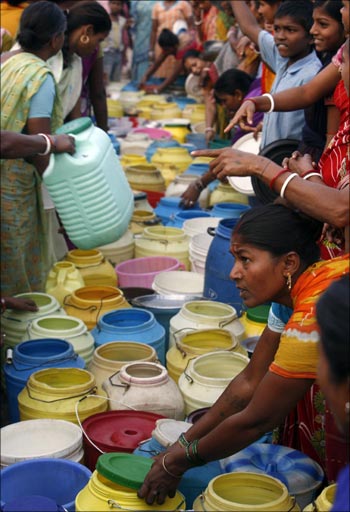

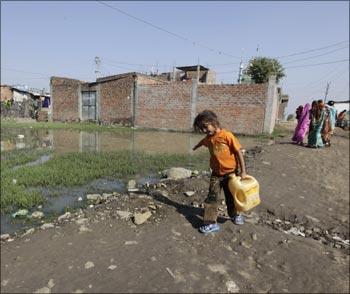
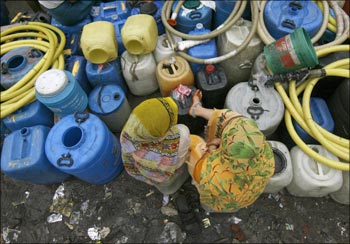
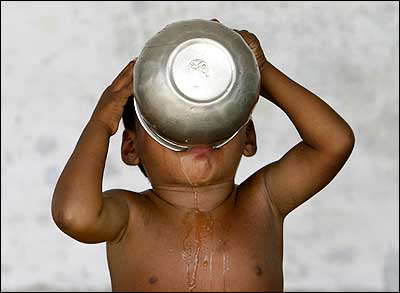
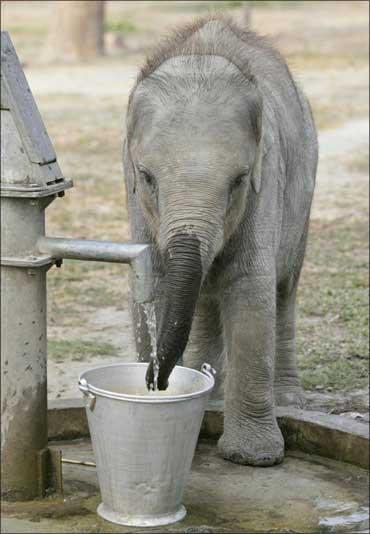

article